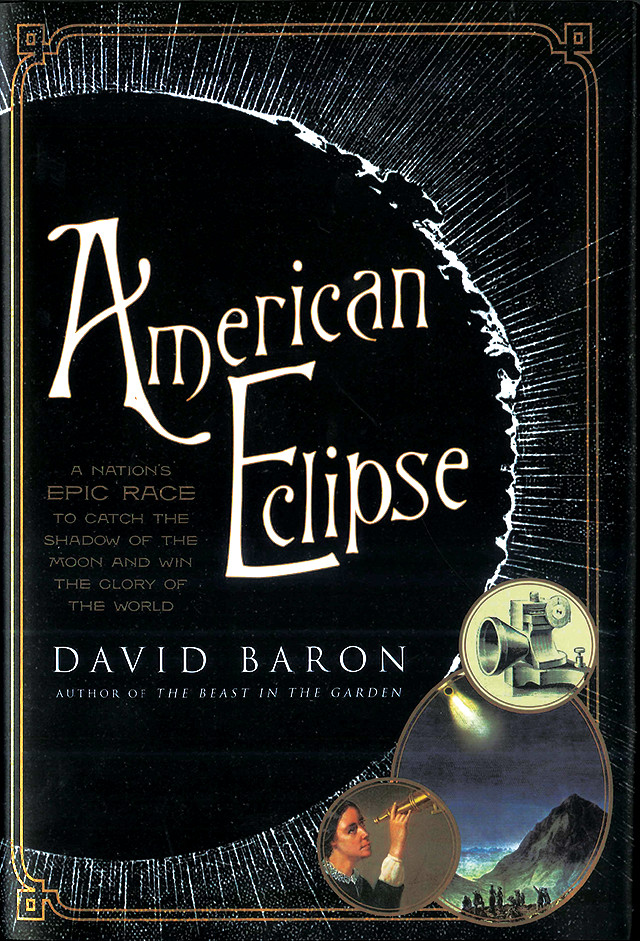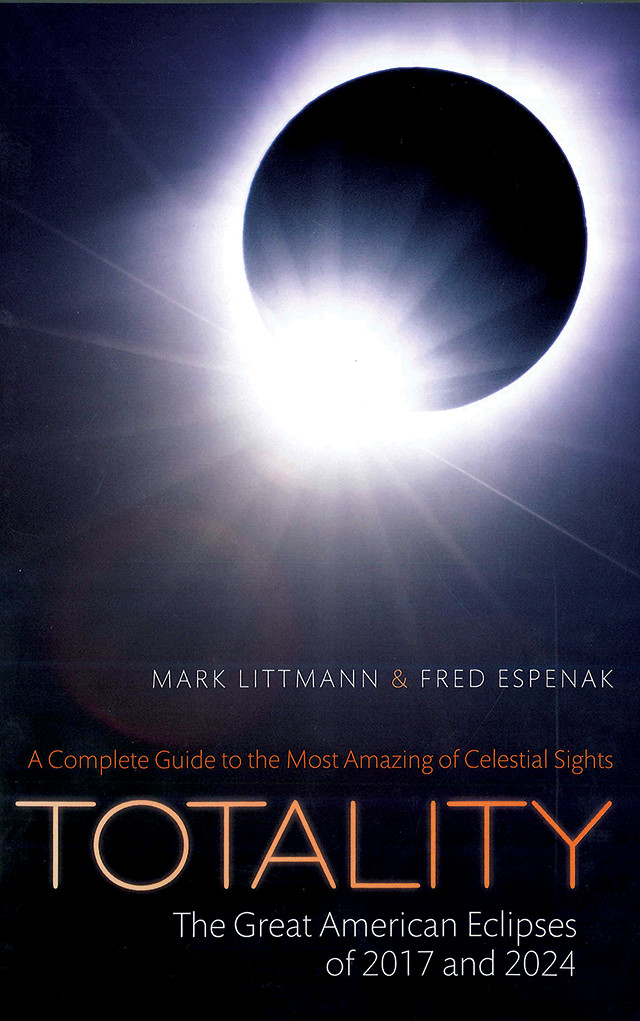
by Thomas Berger Monday, April 9, 2018

American Eclipse: A Nation's Epic Race to Catch the Shadow of the Moon and Win the Glory of the World, by David Baron, Liveright/W.W. Norton, Paperback, 2018, ISBN 9781631494550.
On Aug. 21, 2017, a total solar eclipse traversed across the United States, from the western coast of Oregon to the eastern shores of South Carolina. I witnessed about one minute and 50 seconds of totality from Salem, Ore., where the skies were unusually clear — despite the wildfires then raging around the West. In eclipse parlance, totality refers to the period when the moon — which, in the most mind-blowing of cosmic coincidences, just happens to be the same angular size in the sky as the sun — completely blocks the sun’s bright disk and reveals the tenuous outer solar atmosphere known as the corona.
Even though I’m a solar physicist and can view the solar corona at will through any number of ground- or space-based telescopes, nothing prepared me for the jaw-dropping beauty of the solar corona seen with the naked eye during a cloudless total solar eclipse. I now fully agree with Fred Espenak, co-author of “Totality: The Great American Eclipses of 2017 and 2024,” that “in rating natural wonders, on a scale of 1 to 10, a total eclipse of the sun is a million!”

Totality: The Great American Eclipses of 2017 and 2024, by Mark Littmann and Fred Espenak, Oxford University Press, 2017, ISBN 9780198795698.
The two books reviewed here — “Totality” and “American Eclipse: A Nation’s Epic Race to Catch the Shadow of the Moon and Win the Glory of the World” by Colorado science writer David Baron — both capture the historical scientific significance and the excitement that still exists today in viewing solar eclipses, particularly those that pass over our own piece of the planet.
In “American Eclipse,” Baron takes us back to the Gilded Age and the total solar eclipse of July 29, 1878 — when the solar corona, which wasn’t even accepted as part of the sun’s atmosphere at the time, was still a mystery. The location and timing of eclipses were calculated by hand by the likes of American astronomer Simon Newcomb, superintendent of the Nautical Almanac, without the aid of computers or even reliable clocks. Baron’s subtitle emphasizes that the Gilded Age was a time when American scientific institutions struggled for respect from scientific leaders in Europe, and many American scientists of the day viewed the eclipse as an opportunity to prove their mettle in the astronomical and measurement sciences.
Taking a character-centric approach, the book focuses on several scientific personalities of the time, including University of Michigan Professor James Craig Watson, America’s foremost minor planet (asteroid) hunter; Professor Norman Lockyer, the preeminent solar physicist of the day, discoverer of the element helium (via solar spectroscopy), founder and editor-in-chief of Nature, and Britain’s most famous astronomer to attend the 1878 “American” eclipse; Professor Henry Draper of New York University, discoverer of oxygen in the solar atmosphere; and Vassar Professor Maria Mitchell, one of America’s foremost astronomers and strongest advocates for women’s rights in politics and the sciences, who viewed the eclipse from just outside Denver, Colo. Also prominent throughout the story is Thomas Edison, the famous inventor of the phonograph and many other successful inventions, and the not-so-successful “tasimeter” with which he, in a personal echo of the nation’s scientific insecurity at the time, hoped to measure the temperature of the solar corona during the eclipse, thus establishing his reputation as a serious man of science rather than just an inventor.
Baron writes compellingly about the conditions of the American West in 1878 and what it took for the Draper-Watson-Lockyer-Edison expedition to make its way by train to the “barren wasteland” of Rawlins, Wyo., where totality had been judged most likely to happen under cloudless skies, and where we meet other personalities, such as the self-promoting, alcoholic celebrity of the time, “Texas Jack.” Baron also captures the courage and tenacity of Mitchell in persisting through absurd obstacles, not least of which was the prevailing belief that a woman couldn’t possibly travel on her own to the Wild West city of Denver, to carry out a “women’s eclipse expedition.” Although seemingly not that long ago, it is amazing to read of the tense encounter that another eclipse expedition, organized by Princeton University, had with Ute warriors just outside Denver, only a year before their leader, Chief Colorow, would lead a war against further encroachment on Native American lands.
The story also reminds us that eminence is no guarantee of scientific acuity. The famous Professor Watson, primed with plentiful hubris, claimed with great certainty to have discovered the long-rumored planet of Vulcan inside Mercury’s orbit during the eclipse — a claim which obviously turned out to be bogus. And the great Professor Lockyer could hardly contain his scorn for Professor Draper’s claim of discovering oxygen in the solar spectrum — a claim that Lockyer thought ridiculous, but which later turned out to be correct, not to mention extremely significant for understanding the link between the stars and life on Earth.
“American Eclipse” will give readers a detailed picture of American science in the Gilded Age, thanks to Baron’s knack for bringing the past to light through a grand cast of characters, while also putting scientific discovery in its social and political context.
After absorbing the history in “American Eclipse,” and perhaps after having witnessed the Great American Eclipse of 2017, readers would be well-advised to start getting ready for the next grand celestial event to traverse our nation: the total solar eclipse of April 8, 2024, which will cross the U.S. from Texas to Maine.
In “Totality,” which looks at both the 2017 and 2024 eclipses, science writer Mark Littmann and NASA’s Fred Espenak, known as “Mr. Eclipse,” combine their scientific and writing talents to produce a full compendium of eclipse odds and ends, from the psychological impacts of seeing a total solar eclipse, to the mythology and history of eclipses, to tips on safely viewing and photographing them.
For those who possess a time machine or plan on living forever, the book includes Espenak’s maps of all solar eclipses in the United States geographical region from 1492 to 2100, as well as detailed maps of the upcoming 2024 event. If you want one book that captures the full range of eclipse experiences, from the thrill of the chase, to the science of the celestial alignments and solar physics behind eclipses, while focusing on the recent and not-so-far-off events in the United States, this is that book.
© 2008-2021. All rights reserved. Any copying, redistribution or retransmission of any of the contents of this service without the expressed written permission of the American Geosciences Institute is expressly prohibited. Click here for all copyright requests.